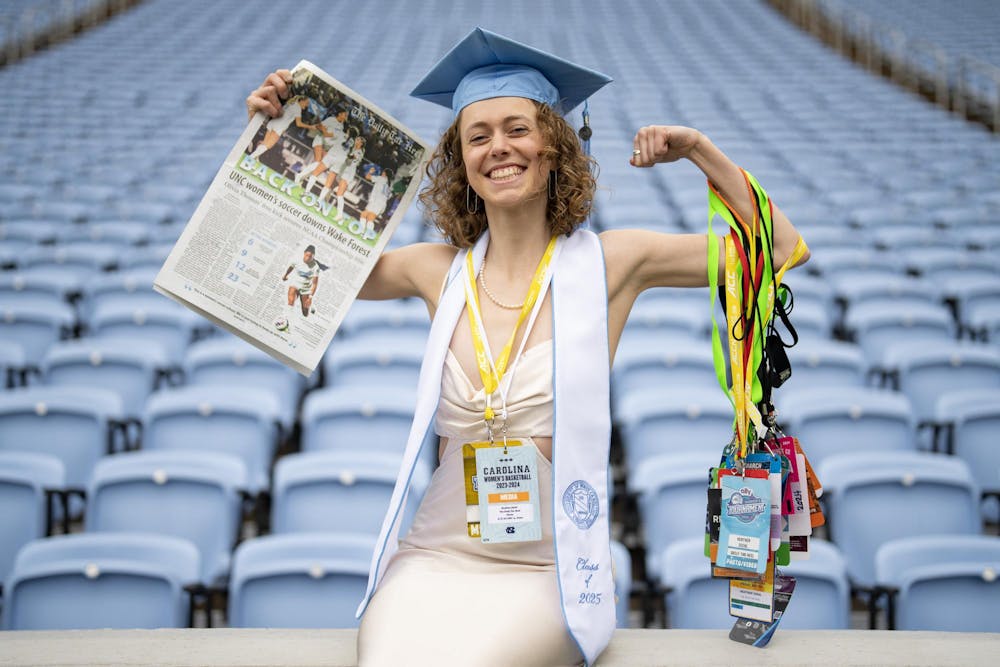My first year at UNC felt overwhelming and confusing until I sat beside Ira Wilder in a random political science class.
Instead of taking notes, I watched him edit his latest photo assignments for The Daily Tar Heel. I asked him what he was doing and felt like a fraud telling him that I was a photographer too. He told me to sign up for Media and Journalism 180: Foundations of Photojournalism and join The DTH.
The rest is history.
For the next three years, I was everywhere from campus protests about wage increase and accessibility to the floor of the Dean E. Smith Center with my Nikon camera prepping for my next @diehl_photography post captioned #onassignment for @dailytarheel.
At times I felt disconnected from The DTH because the photo staff doesn’t spend much time in the newsroom. But I found my community out in the field.
During the early mornings photographing the pro-Palestine encampment, I knew I could wander over to Liv Reilly and Emmy Martin for support and guidance. When I was pepper sprayed, I turned to Grace Richards and McKenzie Bulris to hold my camera and bag while The News & Observer’s Travis Long washed my eyes out.
It was moments like this that made me realize The DTH isn’t a starting point in a career of journalism — student journalists are necessary to keep our universities accountable and document our generation. The resistance, our beliefs and how we challenge those in power are more important than the prestige of a newspaper.
I wasn’t sure if journalism would be right for me because I thought a journalist must be closed off and cold to do objective work. But I have learned my empathy can allow me to connect with the community I’m documenting and understand what our coverage needs to be doing.
It’s not easy to spend eight hours a day documenting an encampment and sleeping with your ringer on in case anything happens, especially when you aren’t getting paid. But knowing it’s what our community needs always kept me going.



